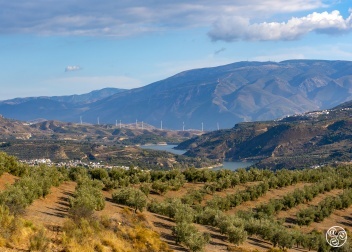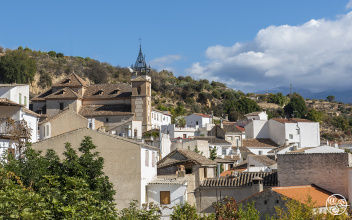Valle de Lecrín
Festivals in Dúrcal
Weather Forecast for Dúrcal
Tourist Office in Dúrcal
Acebuches
Acebuches is one of three villages that were joined together in 1976 to be part of a single municipality called El Pinar. The other two were Pinos del Valle, the 'capital' where the town hall office is located and Izbor village.
Ízbor
Ïzbor is one of three villages that were joined together in 1976 to be part of a single municipality called El Pinar. The other two were Pinos del Valle, the 'capital' where the town hall office is located and Acebuches.
Tablate
Tablate is an abandones village located in the municipality of El Pinar in the Lecrin Valley comarca. There are a few remnants of the village to be seen such as a roadside Venta and bridge.
Pinos del Valle
Pinos del Valle is the larger of three villages that were joined together in 1976 to be part of a single municipality called El Pinar. The other two were Izbor and Acebuches village. Pinos del Valle is the 'capital' village where the town hall is located.
Restábal
Restábal is one of three villages that were merged in 1972 to form a municiap district called El Valle. The other two villages are Saleres and Melegís. Restábal as the larger and being located between the other two is 'capital' village and is where the town hall offices are located.
Melegís
Melegís is one of three villages that were merged in 1972 to form a municiap district called El Valle. The other two villages are Saleres and Restabal. Restábal as the larger and being located between the other two is 'capital' village and is where the town hall offices are located.
Saleres
Saleres is one of three villages that were joined together in 1976 to be part of a single municipality called El Valle. The other two were Restábal and Melegís. Restábal being the larger and the centrally located became the 'capital' where the town hall office is located.
The Lecrín Valley
This area or Comarca encompases the upper part of a picturesque deep valley south of Granada city and west of the Sierra Nevada. This valley comprises many small tributaries that flow into the Embalse de Béznar. Within the valley or more correctly valleys are numerious small villages , which, in some cases, have less than 200 residents. These are tranquil and unspoilt destinations for nature and outdoor sports such as walking, hiking and fishing.
Villamena
Villamena is home to the Arroyo de la Laguna caves, the source of mineral waters from the Padul lake. Made up of two populations, Cozvíjar and Cónchar, the former is the village ‘capital’. Walking through Cozvíjar, visitors will find three important buildings: the Casa Grande, an 18th-century palace owned by the counts of Villa Amena; the Iglesia Parroquial de San Juan, adjacent to the Casa Grande and built in the mid 16th century.
Padul
The town of Padul is an ideal destination for lovers of nature and adrenalin sports. Located in the Sierra del Manar, the foothills of Sierra Nevada, the area offers visitors activities such as hiking, horse-riding, mountain-biking, paragliding and hang-gliding. Padul also has the advantage of being very close to the capital city of Granada.
Nigüelas
Nigüelas is a village which reveals charm in every corner. Its location is extremely privileged - it is the highest municipality in the Valle de Lecrín. The 3000-metre-high “Pico del Caballo” mountain impresses visitors with its grandeur - in winter it is capped with snow, while in summer or on a clear day, it offers view down to the sea.
Lecrín
Lecrin is the town which was named after the comarca (area) Valle de Lecrin (Lecrin Valley) in which is is located. As a municipality Lecrin was only formed in the 1970s. It was combined with six older villages - Mondújar, Talará, Béznar, Acequias, Chite and Murchas to form the - have been around for much longer.
El Valle
El Valle is not a village as such but a municipal district created in 1972 when three small but separate villages were merged together. The villages are Saleres, Restabal and Melegís.
El Pinar
As well as a rich historical and artistic heritage, resplendent in various religious buildings, El Pinar offers one of the most spectacular landscapes in the Alpujarra: the steep, narrow Tablate ravine, with its ancient bridge dating from the 15th century which serves as the main gateway to the Alpujarras
Dúrcal
The village of Dúrcal is situated in the valley of the Dúrcal River, on the western slopes of the Sierra Nevada, in the fertile Lecrín Valley. Throughout the Moorish period, the land in and around Dúrcal was used for growing sugar, as well as oranges and lemons, and these orchards still remain to this day. The largest cable car railway in Europe was once located here, but it was dismantled at the end of the 1950s. The Puente de Lata iron bridge remains. It was built by a disciple of Gustave Eiffel. The town has a population of around 7,000.
Albuñuelas
The village of Albuñuelas has been occupied since the prehistoric times. It the village which is spead out like a horizontal strip of houses on the steep valleyside is an interesting village to visit. The municipal district is one of the largest in Granada.








